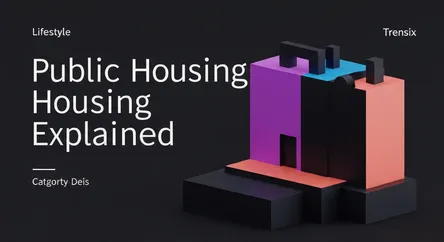Lifestyle
Public Housing Explained

Discover what public housing is, why it's a trending topic, and its impact on providing affordable shelter for low-income families and individuals.
What is it?
Public housing refers to residential properties owned and managed by government authorities, offered at subsidized rents to eligible low-income families, the elderly, and people with disabilities. The primary goal of these programs, often administered by a local Public Housing Agency (PHA), is to provide safe, decent, and affordable rental housing. Eligibility is typically determined by factors such as annual gross income, family size, and citizenship status. These developments can range from single-family homes to high-rise apartment buildings and are a cornerstone of social safety nets in many countries.
Why is it trending?
Discussions around public housing are trending due to a global housing affordability crisis. Soaring rent prices, inflation, and wage stagnation have pushed affordable shelter out of reach for millions, increasing demand for subsidized options. There is also a renewed focus on urban inequality and homelessness, with policymakers and advocates debating the effectiveness and funding levels for public housing programs. Modernization efforts and proposals for new models of social housing are frequently in the news as cities grapple with these complex challenges.
How does it affect people?
Public housing provides critical stability for residents, allowing them to allocate more of their income to food, healthcare, and education. A stable home is foundational for children's success in school and adults' ability to maintain employment. However, the system faces challenges, including long waiting lists, chronic underfunding that can lead to poor maintenance, and the concentration of poverty in some developments. For many, it's a vital lifeline, but for the system to be truly effective, it requires sustained investment and thoughtful policy.